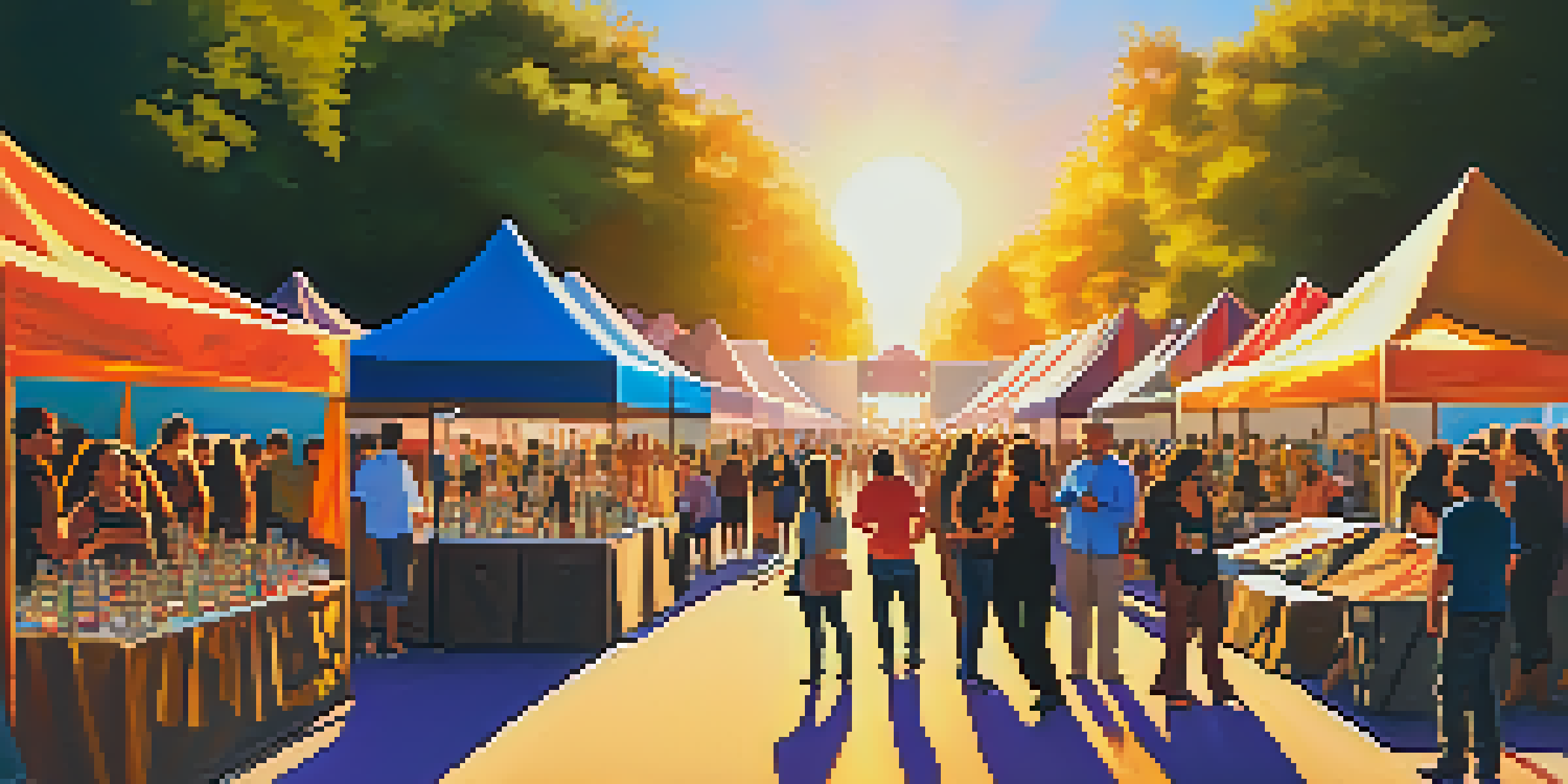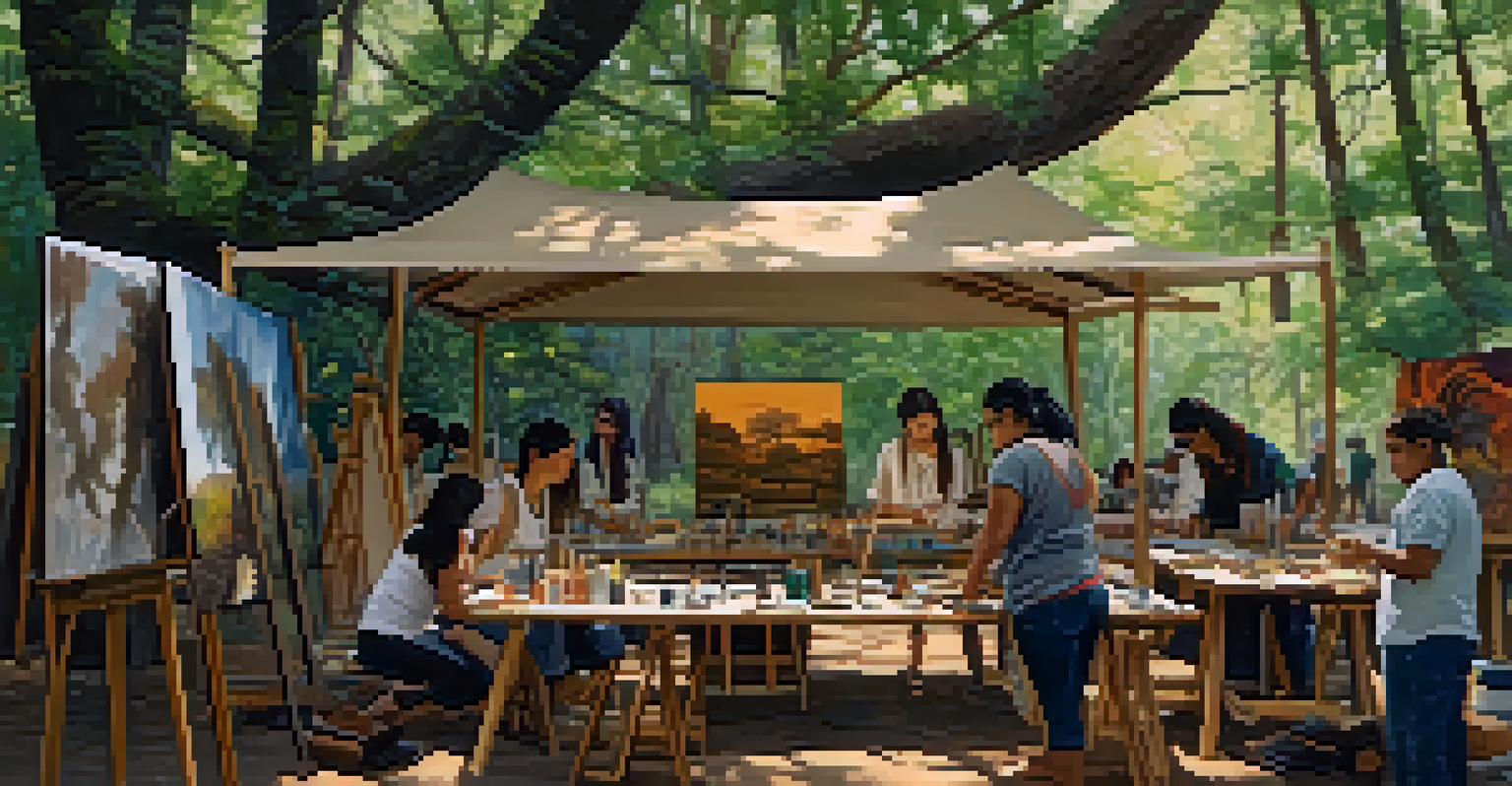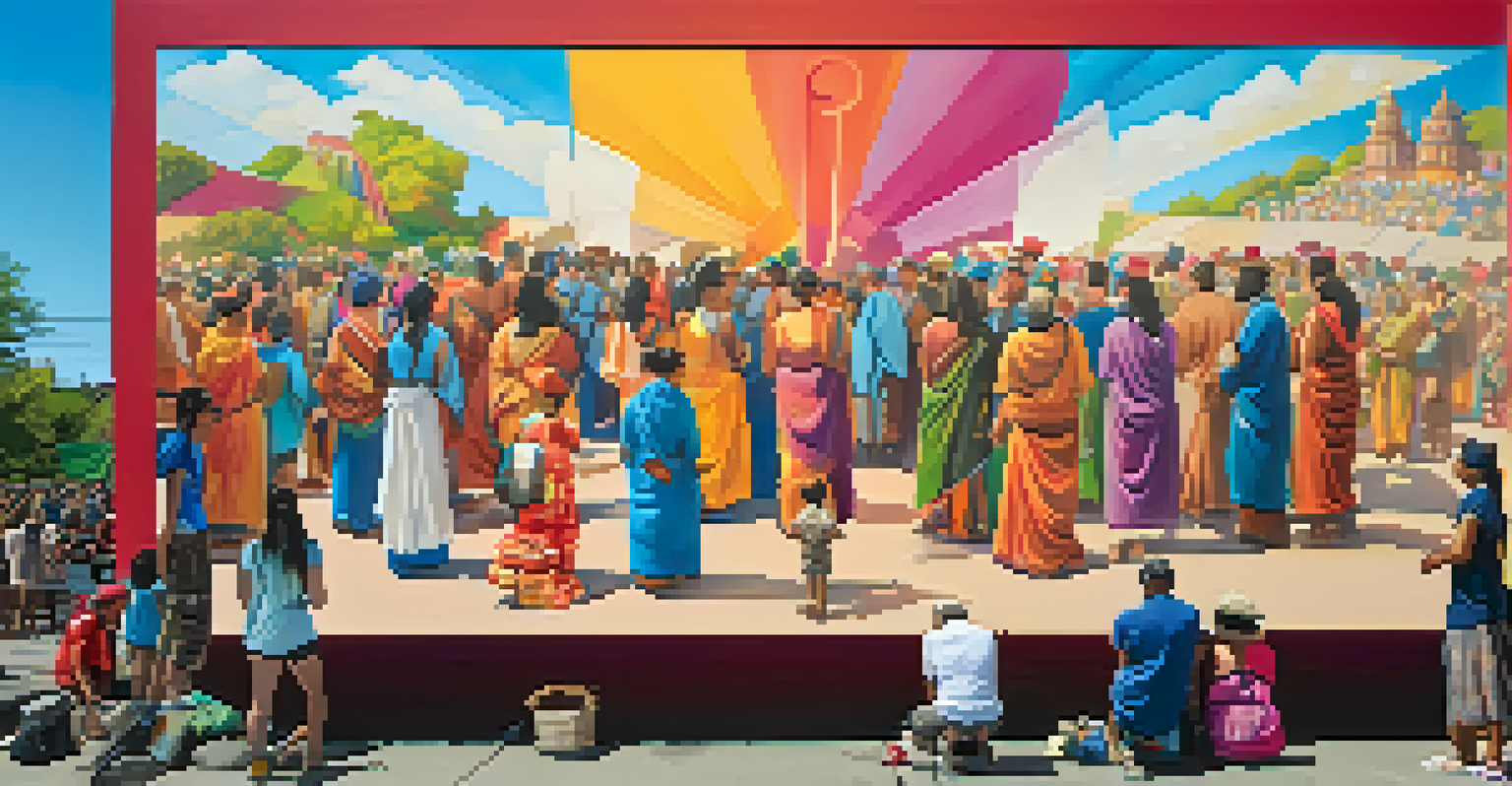Art Festivals and Cultural Appropriation: A Double-Edged Sword

Understanding Art Festivals and Their Importance
Art festivals serve as vibrant platforms where creativity flourishes and diverse cultures come together. They showcase local artists and allow communities to celebrate their heritage while inviting others to experience it. These events often feature a mix of music, visual arts, and performances, creating an immersive atmosphere that draws in crowds from near and far.
Art is a reflection of our society, and it can be a powerful tool for cultural understanding and respect.
The significance of these festivals goes beyond mere entertainment; they foster a sense of community and belonging. They provide artists with exposure and opportunities to connect with their audience, which can be crucial for their careers. Additionally, they stimulate local economies, boosting tourism and inspiring collaborations among artists from different backgrounds.
However, as these festivals grow in popularity, they also face challenges, particularly concerning the representation of cultures. Striking a balance between celebration and respect is essential to ensure that the essence of the cultures being showcased is honored and preserved.
Defining Cultural Appropriation in the Arts
Cultural appropriation occurs when elements of one culture are adopted by members of another culture, often without understanding or respect for their significance. This can lead to the commodification of cultural symbols, diluting their meaning and impact. In the arts, this is particularly sensitive, as it can involve misrepresentation or exploitation of marginalized cultures.

For example, when a non-Indigenous artist wears traditional Native American headdresses in their performances, it can be seen as disrespectful and harmful. Such actions can perpetuate stereotypes and disregard the deep cultural meanings behind these symbols. Understanding this concept is crucial for both artists and festival organizers to navigate the complex cultural landscape.
Art Festivals Foster Community
Art festivals bring people together, celebrating diverse cultures and providing vital exposure for local artists.
Cultural appropriation can often blur the lines between appreciation and exploitation, which is why discussions around it are increasingly relevant in today’s art festivals. Identifying the difference helps to promote genuine cultural exchange and respect.
The Fine Line Between Appreciation and Appropriation
The distinction between cultural appreciation and cultural appropriation is often nuanced and subjective. Appreciation involves honoring and respecting a culture's traditions and practices, often through collaboration or learning. On the other hand, appropriation tends to involve a one-sided benefit without acknowledging or compensating the original culture.
To truly appreciate a culture, you must understand its history and its people.
One way to appreciate rather than appropriate is by engaging with the culture authentically. This could mean collaborating with artists from that culture or participating in cultural exchanges that foster understanding and respect. For instance, an art festival could feature workshops led by indigenous artists, allowing attendees to learn directly from them.
Creating space for dialogue and education at festivals can help bridge the gap between cultures, ensuring that the celebration is inclusive and respectful. This approach fosters a richer experience for everyone involved, making the event not just a showcase, but a learning opportunity.
Case Studies: Art Festivals Navigating Cultural Sensitivity
Many art festivals have taken steps to address concerns around cultural appropriation by implementing guidelines and fostering inclusive practices. For instance, the Edinburgh Festival Fringe has introduced policies that encourage artists to engage with local communities and respect their cultural narratives. This proactive approach helps mitigate instances of appropriation while promoting genuine cultural exchange.
Similarly, the Burning Man festival emphasizes radical inclusion and encourages participants to consider the cultural context of the art they create or display. By promoting awareness and education, these festivals create an environment where the celebration of diversity is rooted in respect and understanding.
Cultural Appropriation Awareness
Understanding cultural appropriation is essential for artists and festival organizers to respect and honor the cultures being showcased.
These case studies exemplify how art festivals can navigate the delicate balance between showcasing diverse cultures and avoiding appropriation. They highlight the importance of ongoing conversations and intentional practices in fostering a respectful artistic community.
The Role of Artists in Cultural Conversations
Artists play a pivotal role in shaping cultural conversations, especially in the context of festivals. Their work can challenge stereotypes, provoke thought, and inspire dialogue about cultural identity and respect. When artists approach their craft with sensitivity and awareness, they can contribute significantly to the broader conversation around cultural appropriation.
For example, an artist who draws from their own heritage, while also respectfully incorporating elements from another culture, can create works that celebrate both. This type of collaboration can foster understanding and appreciation, rather than appropriation, making the art more impactful and meaningful.
Moreover, artists can use their platforms to advocate for marginalized voices within their communities. By amplifying these voices, they can help educate audiences and encourage mutual respect, enriching the cultural tapestry of the festival experience.
Festival Organizers: Champions of Cultural Respect
Festival organizers hold significant responsibility when it comes to addressing cultural appropriation. They are often the gatekeepers who can establish guidelines and create an environment that promotes respect for all cultures. By prioritizing diversity and inclusivity, organizers can ensure that art festivals are spaces where everyone feels valued and respected.
Implementing training sessions for staff and artists about cultural sensitivity can be a proactive step towards fostering an inclusive atmosphere. Additionally, engaging with community leaders and cultural representatives can provide valuable insights into how to honor the traditions being showcased.
Collaborative Cultural Exchange
Engaging in authentic cultural exchanges and collaborations can transform art festivals into inclusive learning experiences.
By taking these steps, organizers can create a festival experience that not only celebrates art but also educates attendees about the importance of cultural respect. This commitment to understanding can enhance the overall impact of the festival, making it a more enriching experience for everyone involved.
Moving Towards a More Inclusive Future
As we explore the intersection of art festivals and cultural appropriation, it becomes clear that fostering a more inclusive future requires ongoing effort from all parties involved. This includes artists, festival organizers, and attendees alike, all of whom play a role in creating respectful cultural exchanges. By prioritizing understanding and collaboration, we can celebrate diversity without crossing the line into appropriation.
Encouraging open conversations about culture, art, and respect can lay the groundwork for a more inclusive approach to festivals. This means listening to the voices of marginalized communities and allowing them to share their stories and experiences. When everyone feels represented, the celebration becomes richer and more meaningful.

In conclusion, navigating the complexities of art festivals and cultural appropriation is a collective journey. Together, we can work towards a future where art serves as a bridge between cultures, fostering appreciation, respect, and understanding.